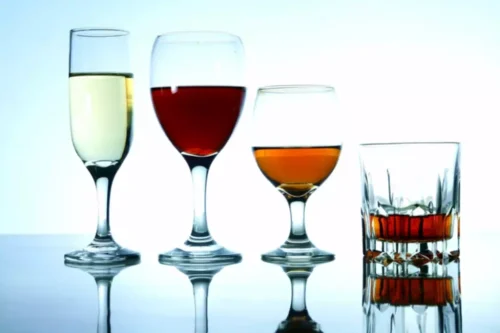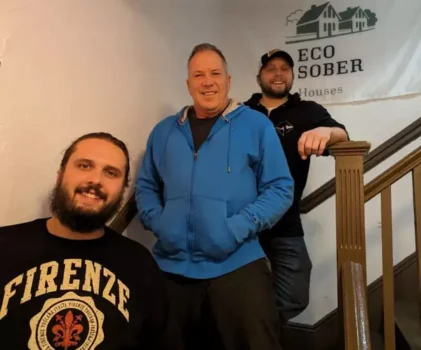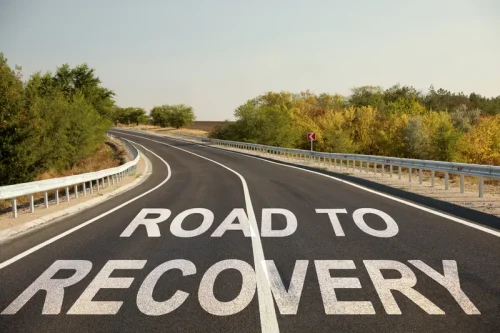
Initial evidence suggests that implicit measures of expectancies are correlated with relapse outcomes, as demonstrated in one study of heroin users [61]. In another recent study, researchers trained participants in attentional bias modification (ABM) during inpatient treatment for alcohol dependence and measured relapse over the course of three months post-treatment [62]. Relative to a control condition, ABM resulted in significantly improved ability to disengage from alcohol-related stimuli during attentional bias tasks.
- For example, if the client understands that using alcohol in the day time triggers a binge, agreeing for a meeting in the afternoon in a restaurant that serves alcohol would be a SID5.
- Moreover, 87.1% of G allele carriers who received NTX were classified as having a good clinical outcome at study endpoint, versus 54.5% of Asn40 homozygotes who received NTX.
- However, many of the treatments ranked in the top 10 (including brief interventions, social skills training, community reinforcement, behavior contracting, behavioral marital therapy, and self-monitoring) incorporate RP components.
- In the 1980s and 1990s, the HIV/AIDS epidemic prompted recognition of the role of drug use in disease transmission, generating new urgency around the adoption of a public health-focused approach to researching and treating drug use problems (Sobell & Sobell, 1995).
- These interventions integrate both cognitive behavioural and mindfulness based strategies.
Cognitive Dissonance
His father and maternal uncle were heavy drinkers (predispositions to drinking, social learning). Rajiv was anxious since childhood (early learning and temperamental contributions) and avoided social situations (poor coping). He started using alcohol in his college, with friends and found that drinking helped him cope with his anxiety. Gradually he began to drink before meetings or interactions (maladaptive coping and negative reinforcement). He reported difficulty sleeping if he did not drink, could not get past the day without drinking or thinking about his next drink (establishment of a dependence pattern).
- One study [74] found evidence suggesting a feedback cycle of mood and drinking whereby elevated daily levels of NA predicted alcohol use, which in turn predicted spikes in NA.
- The first step in this process is to teach clients the RP model and to give them a “big picture” view of the relapse process.
- As a result of AVE, a person may experience uncontrollable, stable attributions, and feelings of shame and guilt after a relapse.
- Most importantly, 12-step programs tend to be abstinence-based, emphasizing that an authentic or high-quality recovery depends on abstaining completely from drugs and alcohol.
2. Controlled drinking
Counteracting the effects of the AVE is necessary to support long-term recovery from addiction. Gillian Steckler is a research assistant for Dr Katie Witkiewitz at Washington State University Vancouver where she also attended and received a bachelor of science degree in psychology. She assists Dr Witkiewitz in alcohol and substance abuse research, prevention, https://ecosoberhouse.com/ and treatment. Rather than labeling oneself as a failure, weak, or a loser, recognizing the effort and progress made before the lapse can provide a more balanced perspective. For Jim and Taylor, this might involve acknowledging the months of sobriety and healthier lifestyle choices and understanding that a single incident does not erase that progress.
- These findings may be informative for researchers who wish to incorporate genetic variables in future studies of relapse and relapse prevention.
- One study found that among those who did not complete an abstinence-based (12-Step) SUD treatment program, ongoing/relapse to substance use was the most frequently-endorsed reason for leaving treatment early (Laudet, Stanick, & Sands, 2009).
- CBT comprises of heterogeneous treatment components that allow the therapist to use this approach across a variety of addictive behaviours, including behavioural addictions.
- Consistent with this idea, EMA studies have shown that social drinkers report greater alcohol consumption and violations of self-imposed drinking limits on days when self-control demands are high [79].
Critiques of the RP Model
We summarize historical factors relevant to non-abstinence treatment development to illuminate reasons these approaches are understudied. Relapse prevention includes understanding what triggers substance abuse, which varies from person to person. As an example, when out with friends at their favorite hangout, someone with alcohol use disorder may feel like having a drink. Ark Behavioral Health Is an accredited drug and alcohol rehabilitation program, that believes addiction treatment should not just address “how to stay sober” but needs to transform the life of the addict and empower him or her to create a more meaningful and positive life. We are dedicated to transforming the despair of addiction into a purposeful life of confidence, self-respect and happiness.

- Future research with a data set that includes multiple measures of risk factors over multiple days could also take advantage of innovative modeling tools that were designed for estimating nonlinear time-varying dynamics [125].
- A mindset shift caused by triggers or stress may lead you to take that drink or start using drugs again.
- No matter what it is, you need to find a reason that you legitimately care about to keep you on track.
- The use of functional magnetic resonance imaging (fMRI) techniques in addictions research has increased dramatically in the last decade [131] and many of these studies have been instrumental in providing initial evidence on neural correlates of substance use and relapse.
- One study found that momentary coping reduced urges among smokers, suggesting a possible mechanism [76].
- Between 40 percent and 60 percent of individuals relapse within their first year of treatment, according to the National Institute on Drug Abuse.
People with effective coping responses have confidence that they can cope with the situation (i.e., increased self-efficacy), thereby reducing the probability of a relapse. Conversely, people with ineffective coping responses will experience decreased self-efficacy, which, together with the expectation that alcohol use will have a positive effect (i.e., positive outcome expectancies), can result in an initial lapse. This lapse, in turn, can result in feelings of guilt and failure (i.e., an the abstinence violation effect refers to).

Because of heightened overdose risk, treatment providers can offer naloxone and overdose prevention training to all clients, even those whose “drug of choice” does not include opioids. Rather than communicating pessimism about a client’s potential to recover, these overdose prevention measures acknowledge the existence of the AVE and communicate that safety is more important than maintaining perfect abstinence. More information on overdose prevention strategies in treatment settings is available here. Most importantly, 12-step programs tend to be abstinence-based, emphasizing that an authentic or high-quality recovery depends on abstaining completely from drugs and alcohol. Furthermore, 12-step programs often celebrate abstinence milestones and encourage participants to count abstinent days, leading to a perception that someone who resumes substance use is “going back to the beginning” and has not made progress in recovery. Twelve-step can certainly contribute to extreme and negative reactions to drug or alcohol use.
1. Nonabstinence psychosocial treatment models

These negative emotions are, unfortunately, often temporarily placated by a renewed pattern of substance abuse. It includes thoughts and feelings like shame, guilt, anger, failure, depression, and recklessness as well as a return to addictive behaviors and drug use. This can include abstinence from substance abuse, overeating, gambling, smoking, or other behaviors a person has been working to avoid. Results of a preliminary nonrandomized trial supported the potential utility of MBRP for reducing substance use. In this study incarcerated individuals were offered the chance to participate in an intensive 10-day course in Vipassana meditation (VM).
Historical context of nonabstinence approaches
It’s an acknowledgement that recovery takes lots of learning, especially about oneself. Recovery from addiction requires significant changes in lifestyle and behavior, ranging from changing friend circles to developing new coping mechanisms. By definition, those who want to leave drug addiction behind must navigate new and unfamiliar paths and, often, burnish work and other life skills. Recovery also requires discovery or rediscovery and development of interests that have the power to drive pursuit and deliver rewards, not only spurring the addicted brain to rewire itself but giving life real meaning—the ultimate goal of every person.